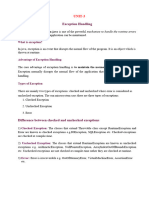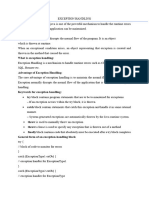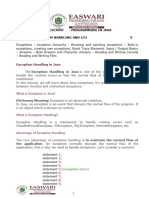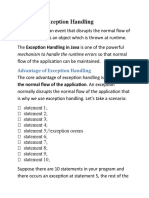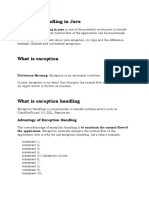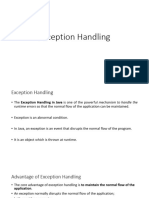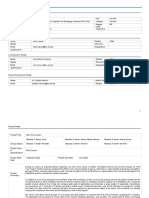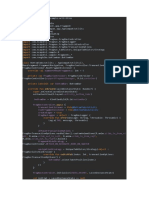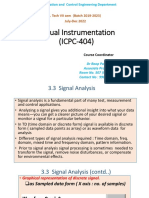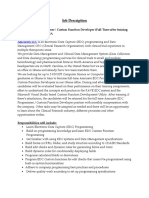0% found this document useful (0 votes)
30 views8 pagesException Handling
The document provides an overview of exception handling in Java, explaining its importance in maintaining the normal flow of applications during runtime errors. It details the types of exceptions (checked, unchecked, and errors), the use of try-catch blocks, and the functionality of finally and throw keywords. Additionally, it covers the concept of custom exceptions and provides examples to illustrate the principles discussed.
Uploaded by
prabhatyadavcsCopyright
© © All Rights Reserved
We take content rights seriously. If you suspect this is your content, claim it here.
Available Formats
Download as DOCX, PDF, TXT or read online on Scribd
0% found this document useful (0 votes)
30 views8 pagesException Handling
The document provides an overview of exception handling in Java, explaining its importance in maintaining the normal flow of applications during runtime errors. It details the types of exceptions (checked, unchecked, and errors), the use of try-catch blocks, and the functionality of finally and throw keywords. Additionally, it covers the concept of custom exceptions and provides examples to illustrate the principles discussed.
Uploaded by
prabhatyadavcsCopyright
© © All Rights Reserved
We take content rights seriously. If you suspect this is your content, claim it here.
Available Formats
Download as DOCX, PDF, TXT or read online on Scribd
/ 8

